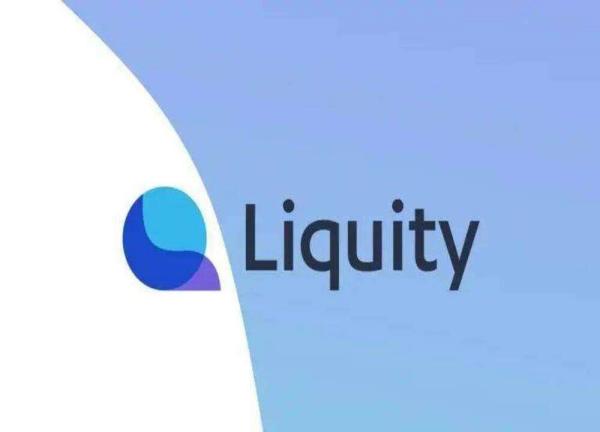
Liquity is a decentralized lending protocol that allows users to withdraw interest-free loans using Ether (ETH) as collateral. The loans are paid out in LUSD, a stablecoin pegged to the U.S. dollar, and require a minimum collateralization ratio of 110%. In addition to the user's collateral, Liquity's loans are guaranteed by a stable pool of LUSD and the collective of all borrowers acting as guarantors of last resort.
As a protocol, Liquidity is non-custodial, immutable and governanceless. This means that the operation of the protocol is not controlled by any single entity, and all operations are algorithmic and automated.
Liquidity’s motivation
Assets with stable values are an important part of Ethereum applications and have grown into an asset class worth tens of billions of dollars. However, the vast majority of these assets come in the form of fiat-collateralized stablecoins, such as Tether and USDC. Decentralized stablecoins such as DAI and sUSD only account for a small portion of the total stablecoin supply, which means that the vast majority of stablecoins are centralized.
Liquidity solves this problem by creating a more capital-efficient and easier-to-use way to borrow stablecoins. Additionally, Liquidity is governance-free, ensuring the protocol remains decentralized.
Advantages of Liquidity
Liquity has several significant advantages, including: 0% interest rate: As a borrower, you don’t need to worry about constantly incurring new debt.
110% minimum collateralization rate: more efficient use of your ETH savings.
No governance: All operations are algorithmic and automated, and protocol parameters are already set when the protocol is deployed.
Directly redeemable: LUSD can redeem related collateral at face value at any time.
Fully decentralized: The Liquidity protocol has no administrative keys and can be accessed through multiple interfaces provided by different front-end operators, making it uncensorable.
Immutability of Liquity: Liquity does not have an administrator key. No one can change the system rules in any way. The code of the smart contract is completely unchanged.
How to use Liquidity? First, you need to choose a web interface (aka front end) to access the system. The core team building the protocol will not be running the front end, but you will be able to access Liquidity through third-party front-end applications and integration services.
Liquity’s main application cases
Liquity provides a variety of application cases, including:
Providing LUSD to the stability pool: in exchange for rewards, ensuring the security of Liquidity.
Staking LQTY: To earn income from fees paid by other users to borrow or redeem LUSD.
LUSD redemption: When the LUSD price is lower than 1 USD, exchange 1 LUSD for 1 USD worth of ETH.
What are LUSD and LQTY? LUSD is a stablecoin pegged to the U.S. dollar that can be used to repay loans in the Liquidity protocol and the collateral can be redeemed at face value at any time. LQTY is a secondary token issued by Liquidity that captures fee revenue generated by the system and incentivizes early users and front-end developers. The total supply of LQTY is capped at 100,000,000 tokens.
Conditions for using Liquidity: To borrow LUSD, all you need is a wallet (like MetaMask) and enough ether to open a vault and pay transaction fees. In order to deposit or stake LQTY in the stable pool, you need to own LUSD and/or LQTY tokens. You can borrow LUSD by opening a vault, and LQTY can be earned by depositing in the stable pool. You can also buy tokens on the open market using Uniswap or other decentralized exchanges.
Liquity Fees
Whenever you borrow LUSD and redeem LUSD, you must pay a one-time fee. For the borrower, the loan's borrowing fee is a percentage of the actual borrowing (measured in LUSD). For redeemers, when exchanging LUSD for ETH, the system will distribute the redemption fee (in ETH) to the user.
Please note that redemption is separate from repaying the loan to which you are the borrower, the latter of which is free of charge. Both fees depend on the amount redeemed. They increase with each redemption but decrease over time if no new redemptions occur.
How to make money using Liquidity?
There are two different ways to generate income using Liquidity: Deposit LUSD into the Stable Pool: and receive liquidation proceeds (in ETH) and LQTY rewards.
Stake LQTY: and earn LUSD and ETH income from borrowing and redemption fees.
Risk and Security: As a non-custodial system, all tokens sent to the protocol will be saved and managed algorithmically without interference from any person or institution. However, you may lose some of your funds in the following two situations:
Borrowers (Vault Owners): If your Ethereum collateral is liquidated, you will keep the LUSD you borrowed, but your vault will be closed and your collateral will be used to compensate depositors of the Stability Pool.
Depositors of the Stability Pool: If the LUSD you deposit is used to repay the debt of a liquidated borrower, liquidation is usually triggered as soon as the borrower's collateralization ratio drops below 110%, and you are likely to receive more Ethereum in return . However, if the price of Ethereum continues to fall and you maintain your position, you may lose a portion of the value of your stability pool deposit.
Although we have audited the system very carefully, we cannot completely rule out user losses caused by hackers or system vulnerabilities. Please see the associated audit report and disclaimer.
Conclusion
As a decentralized lending protocol, Liquity provides a unique interest-free loan mechanism and multiple ways to generate income. Its non-custodial, immutable and governance-free nature makes it a highly secure and decentralized option. Whether you are a borrower or investor, Liquity offers abundant opportunities to maximize your capital efficiency.